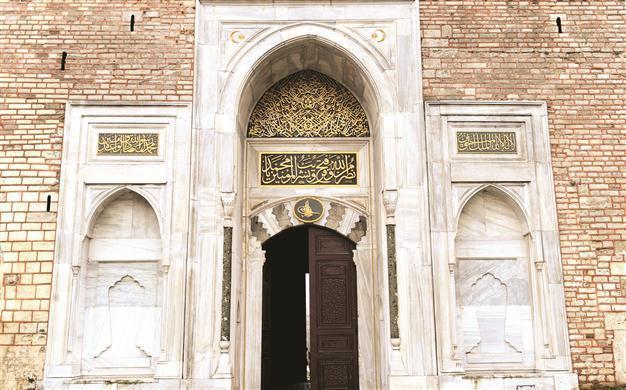Stone inscriptions collection memory of Topkapı Palace
ISTANBUL - Anatolia News Agency

According to Canan Cimilli, inscriptions are important since they show the purpose of a structure and for whom they were built. As they are translated into Turkish, gaps in history are filled. AA photo
Istanbul’s Topkapı Palace stone inscription collection, which is comprised of 272 works, sheds light on the history of the palace as well as many structures that do not exist today.
The archaeologist responsible for the stone inscriptions at the palace, Dr. Canan Cimilli, said the collection was a very important and valuable one, and there were a large number of various stone works in the section along with stone inscriptions.
She said various architectural factors including fountains, column shafts, pedestals, stone cubes, water basins and bath basins were among the works in that section. She said inscriptions were considered the identity of a work.
“Inscriptions are important since they show the purpose of a structure and for whom they were built,” Cimilli said. “Among them there are inscriptions of many structures, fountains or palaces that do not exist today. There is also the inscription of the Topkapı Summer Palace, which was built at the time of Sultan Ahmed III but does not exist today. It was the inscription of the palace’s second largest gate.”
The summer palace was burned and destroyed and only its inscription existed today, she said. “The existence of this inscription verifies the existence of the palace. It was a very beautiful palace,” she said, adding that among the stone works, there were also various column capitals from the Hellenistic, Roman and Byzantine periods. The stone works formed a rich collection with their ornamentations featuring the style of their period, she said.
“Also, ornamented inscriptions on the gates of Topkapı Palace are the examples from the Ottoman calligraphers and famous poets. Everything that was created in this period and presented to sultans reflects the high-quality mastership,” Cimilli said. “We can call these inscriptions, made by the best masters in the Ottoman time, the brain, the memory of the palace. They reveal very important secrets. As they are translated into Turkish, gaps in history are filled. Most of the inscriptions have the sultan’s signature. They also have dates.”
She said inscriptions were from the 17th, 18th and 19th centuries. “There are a few inscriptions from earlier periods. Most of them have been destroyed and do not exist today. We have inscriptions from the Mahmud II period, the earliest. The number of 18th century inscription is more. It is estimated that there was more structuring at the time of Mahmud II. They have traces of 17th and 16th centuries. There are flower figures on 18th century inscriptions and we see fruit on 19th century inscriptions.”
Gates and inscriptions more important in Ottoman era
Cimilli said Bab-ı Hümayun, the first gate of Topkapı Palace, had the signature of Ali Bin Müridi, the famous calligrapher from the period of Fatih Sultan Mehmed. She said, “Gates and inscriptions were very important for the Ottomans. The Bab-ı Hümayun’s inscriptions have deep meanings. They give religious messages to people reading them. We understand that Ottoman sultans entered palaces by reading these inscriptions.”
